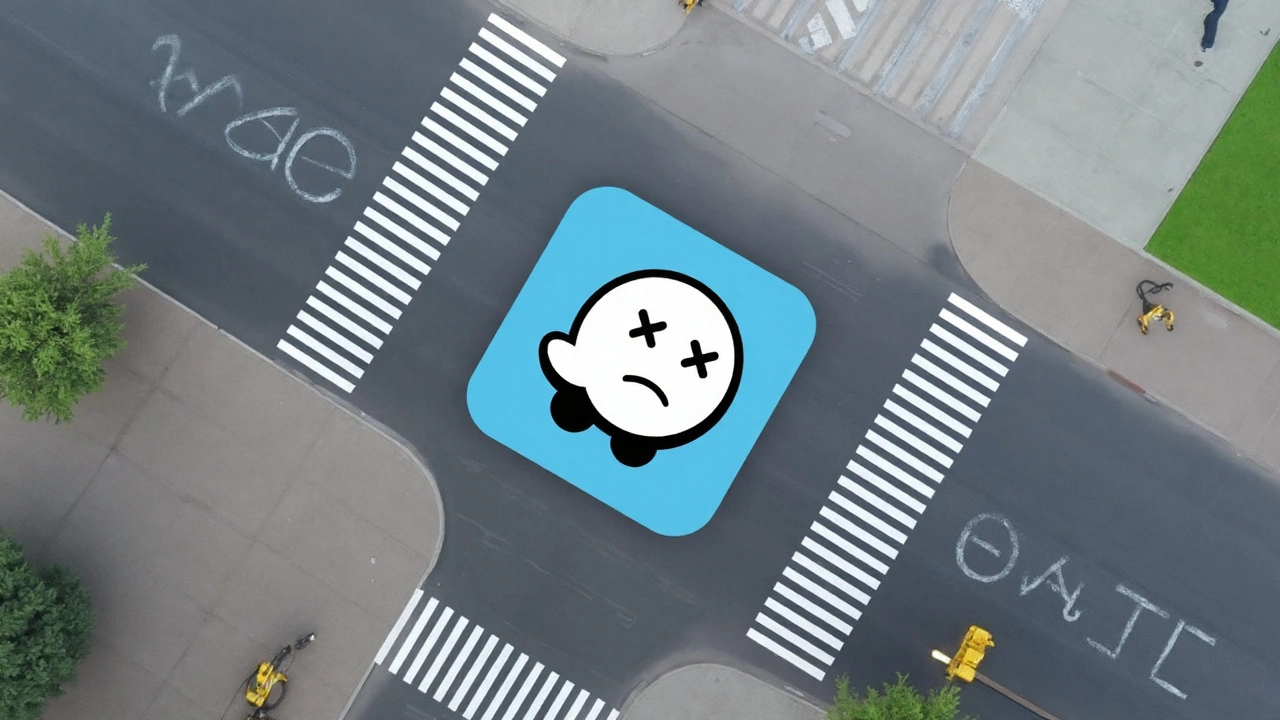Shutting down Waze would hand Google’s competitors a gift. The crowdsourced navigation app still thrives where seconds matter: live incidents, lane closures, police sightings, sudden speed limit changes. In 2025, with Google Maps absorbing more Waze-like features, the rumor mill is loud again. But the evidence points the other way. Google is building a two-app strategy, not clearing the runway for a merger.
The logic is simple. Google Maps is the all-purpose atlas for everywhere you might go—food, transit, EV chargers, photos, reviews, walkability. Waze is the driver’s edge: tight, fast, and tuned to shrug off gridlock. Keeping both is not redundancy. It’s coverage.
What Waze does differently
Waze’s superpower is its community. Drivers report hazards, crashes, objects on the road, speed traps, flooding, and unmarked closures. Those reports flow back into routing in minutes, not hours. In dense traffic or during storms, that speed becomes reliability. Drivers trust what other drivers just saw.
Google Maps blends real-time signals with historical patterns, satellite imagery, Street View context, and business data. It’s excellent for planning and discovery and has the best voice control through Google Assistant. But when the left lane disappears without warning or a minor fender-bender snarls a merge, Waze often spots it first because people tap and talk.
Waze leaned into that edge with a steady stream of updates through 2024: speed bump detection to warn in advance; cleaner roundabout guidance to pick the right exit the first time; merging lane tips to avoid last-second panic; and alerts when speed limits shift mid-route. The app is also testing ways to bundle related alerts into one smarter notification, so drivers get context without a barrage of pings.
That community loop is hard to copy. Apple Maps added basic incident reporting, and several rivals court drivers with similar tools. But sustained engagement—the habit of reporting, validating, and acting on fresh data—takes years to build. Waze has that muscle. Ride-hail drivers, delivery couriers, suburban commuters, and anyone who lives near a construction zone know the difference.
On the user experience side, Waze stays mobile-first and driving-centric. The interface favors clarity over breadth, with bold reroute prompts and hazard icons that don’t bury the lead. There’s a culture to it: drivers help each other because the help shows up for them a few minutes later. That feedback loop keeps the map alive.
Meanwhile, Google isn’t letting the app rust. A recent system requirement bump—Waze now asks for Android 10 or newer—signals active development and deeper support for newer device capabilities, not a wind-down. Android Auto and Apple CarPlay integration remain strong, which matters for anyone who lives in their dashboard.

Why Google keeps two apps
The simplest answer is segmentation. Different tools for different trips. Google Maps owns the broad use cases: planning a weekend, skimming reviews, checking transit lines, saving offline areas, finding a lunch spot with outdoor seating. Waze owns the commute and the high-friction drive: dense traffic, unpredictable roads, short-notice detours.
There’s also a strategy play. Two brands let Google defend more of the market. If Google folded Waze into Maps and trimmed the community vibe, someone else—TomTom’s AmiGO, HERE WeGo, or a nimble startup—could chase the real-time crowd and peel off frustrated drivers. Keeping both blocks that lane.
Running two apps gives Google a lab. Some ideas start in Waze, where the community loop can validate them quickly. Others belong in Maps, where deep data and a broader audience make sense. That split helps with tough technical problems:
- GPS drift in cities, where tall buildings bend signals and misplace cars
- Battery drain from constant location checks and background data
- Fast synchronization of live reports to millions of devices with minimal lag
- Lane-level guidance that requires fusing sensor data, map precision, and driver trust
Waze can push hard on real-time tweaks without dragging along every feature Google Maps supports, from indoor maps to AR walking directions. That freedom matters when the goal is shaving a minute off a reroute, not showing the best coffee nearby.
There’s a brand story too. Waze feels like a driver’s club—lighter tone, playful icons, community credits. Maps is the reliable default, the utility everyone has. If Google forced them into one style, it would lose at least one of those winning identities.
Money plays a part. Both apps sell ads, but they do it differently. Maps reaches people before they go—search, discovery, saved lists. Waze reaches people during the drive, with sponsored pins and takeover moments calibrated not to distract. Different ad formats, different intent. Keeping both widens the funnel.
There are regulatory reasons not to kill Waze, too. Rolling a major competitor into the market leader could invite antitrust questions in the U.S. and Europe, where enforcers pay close attention to how tech giants consolidate power. Google can argue, credibly, that the apps serve different needs and keep each other honest while competing with Apple and others.
What about the counterpoints? Maintaining two codebases and teams costs money. It creates product overlap. It risks confusing users. All fair. But Google has been closing the awkward gaps by sharing core tech behind the scenes, aligning safety policies, and selectively porting features both ways. That’s what we’ve seen with incident reporting and some interface touch-ups in Maps, and with navigation polish flowing into Waze.
The competition isn’t standing still. Apple’s steady rebuild of Apple Maps has brought smoother routing and cleaner visuals. It now supports incident reports, speed checks, and more detailed junction views in many regions. TomTom has renewed its developer tools and consumer apps. HERE and Mapbox power fleets and custom apps that chip away at Google’s lead in specific markets. If Google retires Waze, these players won’t just welcome its users—they’ll design for them.
Real-time navigation is also getting harder, not easier. Road networks change constantly with pop-up closures, micromobility lanes, reversible lanes, and construction that shifts by the day. Weather adds curveballs. EV routing needs accurate charger status, not just locations. Trucks and vans need height, weight, and hazmat-aware paths. That complexity favors a two-track approach: a generalist (Maps) and a specialist (Waze) that learns fast from the edge cases.
Safety sits in the middle of the debate. Navigation can distract if it nags or overloads. Waze’s plan to combine related alerts into fewer, smarter notifications goes at that directly. Both apps lean on voice, larger buttons on CarPlay and Android Auto, and clearer handoffs at tricky junctions. The goal is the same: fewer glances, more anticipatory guidance, better timing.
On privacy, both apps say they anonymize and aggregate location data to improve routes and traffic models. That won’t satisfy everyone, and it’s a growing pressure point in Europe and several U.S. states with tighter data rules. Keeping a crowdsourced product alive means Google has to keep earning trust—tightening default settings, limiting retention, and being clear about what reports reveal and to whom.
What should drivers watch for this year? Three signals: First, Waze’s rollout of combined alerts and more context-aware prompts, which will show how far the app can reduce noise without losing speed. Second, deeper polish around merges, lane guidance, and speed-limit transitions—features many drivers touch every day. Third, signs of smarter verification, where machine learning filters bad reports quickly so the good ones route faster.
Meanwhile, expect Google Maps to continue borrowing what fits without losing its broader brief. Think cleaner incident input for casual users, more live road context in city centers, and better tie-ins with place details, transit disruptions, and EV charging reliability. That cross-pollination is a feature, not a threat, as long as each app keeps its core job.
The question isn’t whether Google can merge the apps. It’s whether it should. The market signal is clear: there is demand for a lean, real-time, community-driven driver’s tool alongside a rich, plan-anything map. Every time traffic stalls and Waze finds a workable detour that Maps didn’t yet see, the case for two apps gets stronger.
Waze’s requirement bump to Android 10+, the steady cadence of navigation updates through 2024, and the quiet engineering work to streamline alerts all point one way. Google is tightening the playbook, not closing the playbook. If you care about beating traffic today, that’s good news.
